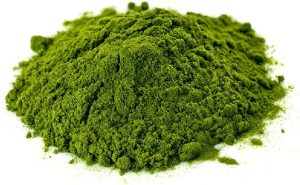
- Overview of Vitamin K1 and K2
- Brief History of Vitamin K1 and K2
- Functions of Vitamin K1 and K2
- Recommended Daily Intake (RDI), Recommended Dietary Allowance (RDA), Adequate Intake (AI) or Reference Nutrient Intake (RNI) for Vitamin K1 and K2
- Deficiency of Vitamin K1 and K2
- Food Sources of Vitamin K1 and K2 and Where to Get it from
- Vitamin K1 and K2 and Their Interaction with Other Medications
- Websites and Articles to Delve into the Benefits of Vitamin K1 and K2
- Disclaimer
Overview of Vitamin K1 and K2
Vitamin K1 and K2 are essential fat-soluble vitamins with distinct roles in the body. Vitamin K1, or phylloquinone, is primarily found in green leafy vegetables like kale and spinach, as well as vegetable oils. Its main function lies in blood clotting, where it plays a crucial role in the synthesis of coagulation proteins.
On the other hand, Vitamin K2, or menaquinones, is present in fermented foods, meats, and certain cheeses. Notably, natto, a Japanese fermented soybean dish, is a rich source of Vitamin K2. In addition to supporting blood clotting, K2 is involved in bone metabolism, influencing calcium regulation and preventing the accumulation of calcium in arteries and soft tissues. This dual functionality makes it vital for both cardiovascular health and bone strength.
Both forms of vitamin K play pivotal roles in maintaining overall health, emphasizing the importance of a well-rounded diet that includes a variety of vegetables, fermented foods, and other nutrient-rich sources to ensure an adequate intake of these essential vitamins. Balancing vitamin K intake is crucial for supporting blood coagulation, bone health, and overall well-being.
Brief History of Vitamin K1 and K2
The discovery of vitamin K can be traced back to the early 20th century. The initial identification of vitamin K1, also known as phylloquinone, is credited to the Danish biochemist Henrik Dam. In the 1920s, Dam conducted research on chickens and observed that a diet lacking a particular nutrient led to hemorrhaging in the birds. This nutrient was later identified as vitamin K1, where the “K” stands for “Koagulation,” reflecting its role in blood clotting.
The subsequent discovery of vitamin K2, or menaquinones, involved the work of researchers investigating Japanese traditional foods. In the early 1930s, Dr. Minoru Shizuka studied a fermented soybean dish called natto, which had long been associated with improved blood clotting. This led to the identification of menaquinones as another form of vitamin K.
Over the years, research has deepened our understanding of the different forms of vitamin K and their diverse roles in the body. Vitamin K1’s role in coagulation and Vitamin K2’s involvement in bone metabolism and preventing vascular calcification have become central to our understanding of these essential nutrients. Today, vitamin K is recognized for its critical contributions to blood health, bone density, and overall well-being.
| Time Period | Key Events and Individuals |
|---|---|
| Early 20th Century | – Henrik Dam identifies vitamin K1 (phylloquinone) in the 1920s. |
| – Dam’s research on chickens reveals a nutrient deficiency leading to hemorrhaging, later identified as vitamin K1. | |
| – The “K” in vitamin K stands for “Koagulation,” reflecting its role in blood clotting. | |
| Discovery of Vitamin K2 | – Dr. Minoru Shizuka studies natto, a fermented soybean dish, in the early 1930s. |
| – Natto’s association with improved blood clotting leads to the identification of vitamin K2 (menaquinones). | |
| Roles in the Body | – Over the years, research deepens the understanding of vitamin K’s different forms and their diverse roles in the body. |
| – Vitamin K1’s role in blood clotting and Vitamin K2’s involvement in bone metabolism and preventing vascular calcification are recognized. | |
| Today’s Understanding | – Vitamin K is recognized for its critical contributions to blood health, bone density, and overall well-being. |
This table summarizes the key events and individuals related to the discovery of vitamin K1 and K2, their roles in the body, and the ongoing understanding of their contributions to health.
Functions of Vitamin K1 and K2
Vitamin K1 and K2 play crucial roles in various physiological functions, particularly in blood clotting and bone metabolism. Here are the primary functions of vitamin K1 and K2:
Vitamin K1 (Phylloquinone):
- Blood Clotting:
- Vitamin K1 is essential for the synthesis of certain proteins involved in blood clotting, including prothrombin. These clotting factors are crucial for the coagulation cascade, preventing excessive bleeding when injuries occur.
Vitamin K2 (Menaquinones):
- Blood Clotting:
- Similar to K1, Vitamin K2 contributes to blood clotting by participating in the synthesis of coagulation proteins. It activates proteins such as osteocalcin and matrix Gla-protein, which are involved in bone metabolism and vascular health.
- Bone Metabolism:
- Vitamin K2, specifically menaquinones, plays a vital role in bone health. It regulates calcium in the bones by activating osteocalcin, a protein that helps bind calcium to the bone matrix. This process is essential for maintaining bone density and strength.
- Prevention of Calcification:
- Vitamin K2 is involved in preventing the abnormal calcification of soft tissues, including arteries and blood vessels. By activating matrix Gla-protein, it helps inhibit the deposition of calcium in these tissues, contributing to cardiovascular health.
Both forms of vitamin K are essential for maintaining the integrity of the circulatory system and supporting skeletal health. While K1 primarily contributes to blood clotting, K2 has a more diverse role, impacting both bone metabolism and cardiovascular health through its involvement in calcium regulation. A balanced diet that includes sources of both vitamin K1 and K2 is essential for overall well-being.
Recommended Daily Intake (RDI), Recommended Dietary Allowance (RDA), Adequate Intake (AI) or Reference Nutrient Intake (RNI) for Vitamin K1 and K2
Recommended Dietary Allowance (RDA) or other specific reference values for vitamin K1 and K2 might not be universally established or widely recognized. The guidelines can vary between countries and health organizations.
Generally, vitamin K is measured in micrograms (mcg) of vitamin K1 and K2 equivalents. It’s important to note that the recommendations may change, so it’s advisable to refer to the most recent dietary guidelines from authoritative sources. As a reference, here are some general guidelines:
Vitamin K1 (Phylloquinone): The RDA for vitamin K1 is typically expressed in micrograms (mcg). The recommended intake can vary by age, sex, and life stage. For adults, the RDA might be around 90-120 mcg per day.
Vitamin K2 (Menaquinones): Specific RDAs or Adequate Intakes for vitamin K2 might not be established in all regions. The intake of vitamin K2 is often not quantified separately in general dietary recommendations.
It’s essential to consider that individual dietary needs can vary based on factors such as age, gender, health status, and specific health conditions. Additionally, the measurement of vitamin K intake might be expressed in micrograms or international units (IU), depending on the guidelines.
For the most accurate and up-to-date information on recommended vitamin K intakes, it is recommended to consult the dietary guidelines provided by reputable health organizations in your region or seek advice from healthcare professionals, such as dietitians or nutritionists.
| Vitamin Form | RDA/Adequate Intake (micrograms) | Notes |
|---|---|---|
| Vitamin K1 (Phylloquinone) | Around 90-120 mcg per day | Recommended intake may vary by age, sex, and life stage. |
| Vitamin K2 (Menaquinones) | Not universally established | Specific RDAs or Adequate Intakes may not be established. |
| Intake of vitamin K2 is often not quantified separately. | ||
| Individual dietary needs can vary based on factors. | ||
| Measurement may be expressed in micrograms or IU. | ||
| Consult the most recent dietary guidelines for accuracy. |
It’s crucial to check the latest dietary guidelines from authoritative sources in your region for the most accurate and up-to-date information on recommended vitamin K intakes. Individual dietary needs and measurement units may vary based on guidelines and health conditions. Always consult healthcare professionals for personalized advice.
Deficiency of Vitamin K1 and K2
Vitamin K deficiency is relatively uncommon, and it can impact blood clotting and bone health due to the essential roles of vitamin K1 and K2, respectively. However, deficiency symptoms are not as well-defined as those for some other vitamins. Here are potential consequences of vitamin K deficiency:
- Impaired Blood Clotting:
- Vitamin K is essential for the synthesis of clotting factors in the liver. A deficiency can lead to an increased risk of uncontrolled bleeding and bruising.
- Hemorrhage and Excessive Bleeding:
- Severe vitamin K deficiency may lead to hemorrhage, especially in newborns. This condition, known as vitamin K deficiency bleeding (VKDB), can be life-threatening if not addressed promptly.
- Increased Risk of Fractures:
- Vitamin K2, in particular, plays a crucial role in bone metabolism by regulating calcium. Deficiency may contribute to decreased bone mineral density and an increased risk of fractures.
- Calcification of Soft Tissues:
- Vitamin K2 is involved in preventing the abnormal calcification of soft tissues, including arteries and blood vessels. Deficiency might lead to an increased risk of vascular calcification.
Factors that may contribute to vitamin K deficiency include:
- Poor Dietary Intake:
- A diet low in green leafy vegetables, which are rich in vitamin K1, and fermented foods or animal products, which may provide vitamin K2.
- Malabsorption:
- Conditions that affect fat absorption, such as certain gastrointestinal disorders or the use of certain medications, can impact vitamin K absorption.
- Newborns:
- Infants are born with low vitamin K levels, and a deficiency can lead to VKDB. To prevent this, newborns are typically given a vitamin K injection shortly after birth.
It’s important to note that vitamin K deficiency is usually addressed by increasing dietary intake or, in severe cases, through supplementation. However, excessive supplementation should be avoided unless under medical supervision, as excessive vitamin K intake can interfere with certain medications and medical conditions. If you suspect a vitamin K deficiency, it’s advisable to consult with a healthcare professional for proper evaluation and guidance.
Food Sources of Vitamin K1 and K2 and Where to Get it from
Vitamin K1 (phylloquinone) and Vitamin K2 (menaquinones) are found in different types of foods. Including a variety of these foods in your diet can help ensure an adequate intake of both forms of vitamin K. Here are common food sources for Vitamin K1 and K2:
Vitamin K1 (Phylloquinone) Sources:
- Green Leafy Vegetables:
- Kale, spinach, broccoli, brussels sprouts, swiss chard
- Vegetable Oils:
- Soybean oil, canola oil, olive oil
- Herbs:
- Parsley, basil, cilantro
- Vegetables:
- Asparagus, cabbage ,green beans, peas
- Fruits:
- Kiwi, blueberries, grapes
Vitamin K2 (Menaquinones) Sources:
- Fermented Foods:
- Natto (fermented soybeans) is an exceptionally rich source of vitamin K2, Fermented cheeses, such as Gouda and Brie, also contain K2.
- Meat and Organ Meats:
- Chicken, Beef, Pork, Liver (particularly high in vitamin K2)
- Fish:
- Salmon, Mackerel, Sardines
- Dairy Products:
- Butter (especially grass-fed butter), Cheese
- Egg Yolks:
- Pasture-raised egg yolks can contain vitamin K2.
It’s important to note that the amount of vitamin K2 in animal-based foods can vary based on the animal’s diet. Animals that graze on grass or eat vitamin K-rich foods themselves tend to produce products higher in vitamin K2.
Including a mix of these foods in your diet can contribute to a well-rounded intake of both vitamin K1 and K2. If you have specific dietary concerns or health conditions, it’s advisable to consult with a healthcare professional or a registered dietitian for personalized guidance.
Vitamin K1 and K2 and Their Interaction with Other Medications
Vitamin K1 and K2 can interact with certain medications, primarily due to their role in blood clotting. It’s important to be aware of these interactions, especially if you are taking medications that affect blood clotting or have other health conditions. Here are key considerations:
Vitamin K and Blood Thinners:
- Warfarin (Coumadin):
- Warfarin is an anticoagulant medication that works by inhibiting the action of vitamin K. Consistent vitamin K intake is crucial for maintaining the stability of warfarin therapy. Changes in vitamin K intake can affect the effectiveness of warfarin. It’s essential to keep vitamin K intake consistent and inform healthcare providers about any dietary changes or vitamin supplements.
- Vitamin K2 and Vitamin K1 Interaction:
- While both vitamin K1 and K2 contribute to blood clotting, they are metabolized differently in the body. Some research suggests that vitamin K2 may have a lesser impact on blood clotting parameters than vitamin K1. However, the interaction between vitamin K2 and blood clotting medications is not as well-studied as that of vitamin K1.
- Other Medications:
- Certain medications and health conditions that affect fat absorption in the digestive tract may also impact the absorption of fat-soluble vitamins, including vitamin K.
Caution and Consultation:
- If you are taking medications that affect blood clotting or have concerns about vitamin K interactions, it’s crucial to consult with your healthcare provider. They can provide personalized advice based on your specific health condition, medications, and dietary habits. If you are prescribed anticoagulant medications like warfarin, your healthcare provider may monitor your International Normalized Ratio (INR) regularly to ensure that your blood clotting time is within the desired range.
Always inform your healthcare provider about any supplements or changes in your diet to ensure coordinated and safe management of your health. Individual responses to medications and interactions can vary, and healthcare providers are best equipped to provide guidance tailored to your specific situation.
Websites and Articles to Delve into the Benefits of Vitamin K1 and K2
When researching information on Vitamin K1 and K2, it’s important to rely on reputable sources to ensure accuracy and reliability. Here are some websites where you can find valuable information on these vitamins:
- National Institutes of Health (NIH) – Office of Dietary Supplements:
- The NIH provides comprehensive information on various vitamins, including Vitamin K. Their fact sheets are well-researched and evidence-based.
- World Health Organization (WHO):
- The WHO provides global data and information on vitamin and mineral nutrition. You can find reports and publications related to Vitamin K on their website.
- Mayo Clinic:
- Mayo Clinic offers reliable health information, and their website has a section dedicated to Vitamin K, discussing its sources, functions, and potential health benefits.
- Linus Pauling Institute at Oregon State University:
- The Linus Pauling Institute provides in-depth information on micronutrients, including Vitamin K. Their Micronutrient Information Center is a valuable resource for nutritional research.
- National Center for Biotechnology Information (NCBI) – PubMed:
- PubMed is a database of biomedical literature, including articles on Vitamin K research. You can find scientific studies, reviews, and clinical trials related to Vitamin K1 and K2.
- European Food Safety Authority (EFSA):
- EFSA provides scientific advice on food safety, including dietary reference values for nutrients. You can find information on Vitamin K intake recommendations on their website.
- WebMD:
- WebMD is a popular source for health information, and their Vitamin K page offers an overview of the vitamin, its sources, and potential health benefits.
Remember to cross-reference information from multiple sources to ensure accuracy, and consult with healthcare professionals for personalized advice related to your health and nutritional needs.
Disclaimer
The information is solely provided for educational purposes. It is not intended to diagnose, treat, cure, or prevent any disease. Seek the advice of your physician or qualified healthcare provider with any questions you may have regarding a medical condition at all times. Never disregard professional medical advice because of something you have read or learned from this article.






